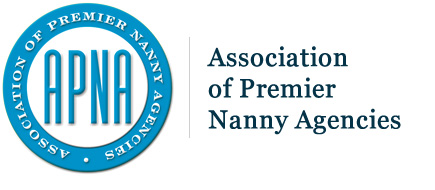With Donald Trump’s presidential inauguration taking place a few short weeks from now, let’s take a closer look at the Trump tax plan and how it impacts families that have child care.
Trump’s proposal to help reduce the costs of child care could also impact how domestic employers pay their nannies. Many nannies aren’t paying federal income taxes or contributing to Social Security and Medicare because their employers pay them “under the table.” But could that change?
Trump Tax Plan to Cut the Costs of Child Care
Trump is proposing an above-the-line deduction that would be capped at the average cost of child care for the age of the child in the taxpayer’s state. An above-the-line deduction subtracts from a taxpayer’s gross income in calculating an “adjusted gross income” for tax purposes. Families making less than $500,000 annually and single parents making less than $250,000 a year would be eligible for the deduction. Stay-at-home parents and families that use grandparents for child care would also be eligible.
The deduction would apply to children under age 13 and is limited to four children per taxpayer.
All families – regardless of income level – would also be able to establish Dependent Care Savings Accounts (DCSAs). These would be set up to help pay for the child care of specific individuals, including unborn children. Parents and their employers can, in total, contribute up to $2,000 annually into a specific account. Any funds remaining in the account when the child reaches 18 could be used for education expenses, but additional contributions could not be made.
It’s unclear how the average cost of child care would be determined under Trump’s plan.
State-by-state costs vary widely. For example, Massachusetts has the highest annual cost for full-time infant care at $17,062 for center-based care and $10,666 for home-based care. Mississippi is the least expensive state for child care with an average cost for center-based infant care of $4,822 and an average cost of $3,972 for home-based care.
Will Trump Tax Plan be Incentive to Increase Legal Employment?
Trump’s proposed deduction could encourage more domestic employers to pay their nannies “on the books.” They obviously can’t take advantage of the deduction without reporting the amount they pay their employee.
This could then increase the amount collected in federal taxes from nannies (whose wages are now not being reported) and the amount paid into Social Security and Medicare.
Let’s break it down.
It’s estimated that there are one million nannies in the U.S. According to the National Domestic Workers Alliance, less than nine percent of nannies are paid legally meaning income taxes are withheld and both the employee and employer pay into Social Security and Medicare.
The average hourly wage for a nanny is $9.80 according to the Economic Policy Institute, which equates to an annual gross pay of $20,384. She would owe about $2,256.28 in federal income tax as well as pay $1,263.81 into Social Security and that same amount into Medicare. Her employer would also contribute that total to Social Security and Medicare.
If 910,000 nannies are paid “off the books,” (ninety-one percent of one million) that means there is more than $2.1 billion in unpaid federal income taxes and $4.6 billion missing in Social Security and Medicare contributions.
Nannies – like most taxpayers – take advantage of deductions and credits to lower their overall tax burden so the amount in unpaid taxes and contributions is likely to be slightly lower than our estimates.
A tax plan that incents more domestic employers to pay their nannies legally through deductions can offset this diminished revenue by increasing the overall tax base. More employees would now be “on the books” and paying taxes while both employees and employers are contributing to Social Security and Medicare.
GTM Payroll Services proposes that all domestic employers – regardless of annual income – be able to deduct wholly 100% of their child care costs from their taxable income.
This type of incentive would remove any remaining obstacles for employers to be fully compliant with household employment tax laws and add hundreds of thousands of domestic workers to the tax base who would pay billions of dollars in federal income tax and Social Security and Medicare contributions.

